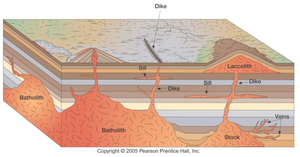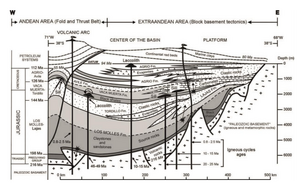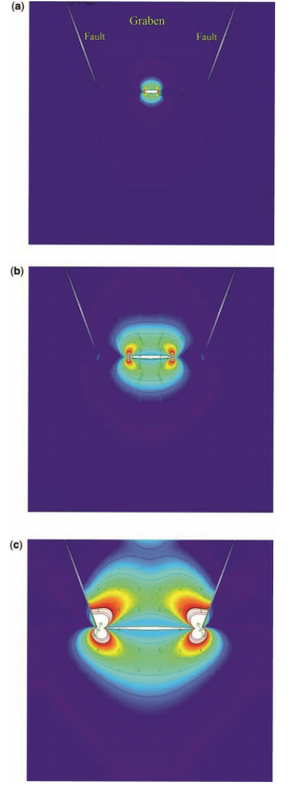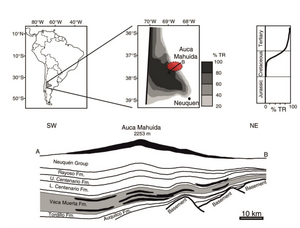Hydrocarbon reservoirs associated to layered intrusive bodies
HYDROCARBON RESERVOIRS ASSOCIATED TO LAYERED INTRUSIVE BODIES
INTRODUCCION
Magma is defined as a molten rock, which behaves as a viscous liquid generated multiple tectonic processes. The ascent to the fragile crust generates bodies of varying geometry.
The morphology presented deployed such bodies depends on the viscosity, the amount of magma available, the list of regional efforts and magmas own composition. They can be classified in globular and lamellar bodies exist as transitional laccoliths. The location of these in sedimentary basins has considerable economic importance globally because it generates fruitful hydrocarbon reservoirs. Examples of these are: Neuquen basin in Argentina, Rockall Basin in the Norwegian Sea and the Yellow Sea Basin in China.
FACTORS CONTROLLING THE EMPLACEMENT OF MAGMA
The magmatic emplacement in the crust is not a freak of nature, it is controlled by a number of physical factors. It will highlight the constraints posed by the location of sedimentary basins subvolcanic due to the importance of these as part of hydrocarbon systems. The focus of the article is aimed at magmatic bodies of small size (2-4 km in diameter and approximately 500 m thick) of laminar geometries and disposal consistent with available subhorizontal sedimentary rocks.
Location factors are: Tectonic: the dynamics of plates associated sedimentary basin must have significant magmatic activity, with interspersed relaxation events in time and needed to climb it. Physical: the density difference between the magma (lower density) and the host rocks is a key factor. Archimedes' principle is the one who acts. The surrounding rocks exert an upward thrust that moves the crustal magma to levels where their density is equated with the host rocks. It may happen that the density remains below the rocks of the environment and that the magma is detained its vertical ascent, the factor involved here are local efforts. If the efforts of the magma pressure can not overcome the resistance of the rocks magma vertically looking for a new way of moving through a plane of weakness such as a stratigraphic unconformity, anisotropy of the medium as fault planes, hinges of folds, etc.
Another important physical factor is the pore pressure. In porous sedimentary rocks saturated with fluids such as water and hydrocarbons, fracture resistance is reduced. This is why it can almost be deduced that the location of the intrusive within a sedimentary basin would be concentrated within shale formations (high porosity) with plenty of oil.
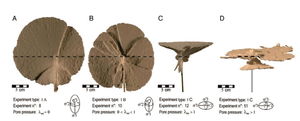
CONSEQUENCES OF CONSTRUCTION SILLS The location of magmatic sill type bodies within sedimentary lithologies has four major consequences: Location in bedrock: has been observed in numerous world sites, site of intrusive occurs in petroleum source rocks, whose cause is still not fully understood but presumably has to do with three factors: pore pressure, level weakness is the bedrock (being shale is less competent ) and plans anisotropy generated in the shales facilitate deflection of the levees that are rising from lower levels.
Fracturing: as shown above for the location of magma is necessary to move adjacent sedimentary rock. The magma pressure is what generates the efforts for this to have committed and also achieved fracturing . Other efforts such as those generated by cooling the sill or by the circulation of metasomatic fluids are also responsible for much of the rock fracturing cash as the sill itself. We have studied the fracture patterns formed by these processes are explained below some. Radial fractures: fracture pattern generated in the sediments by the efforts of the magma pressure, radiating from a central point. Fractures located at the corners of the sill: as seen in Figure 4 the stress concentration at the ends of the sill is very rich and very intense fracturing in consequence. Concentric fractures: generated at the edges of the sill and parts of the country rock by the circulation of metasomatic fluids or lithostatic decompression. Columnar or polygonal fractures: are generated by cooling and solidification of magma, where its volume is reduced contraction columnar cells formed orthogonal to the surface through which heat is lost.
